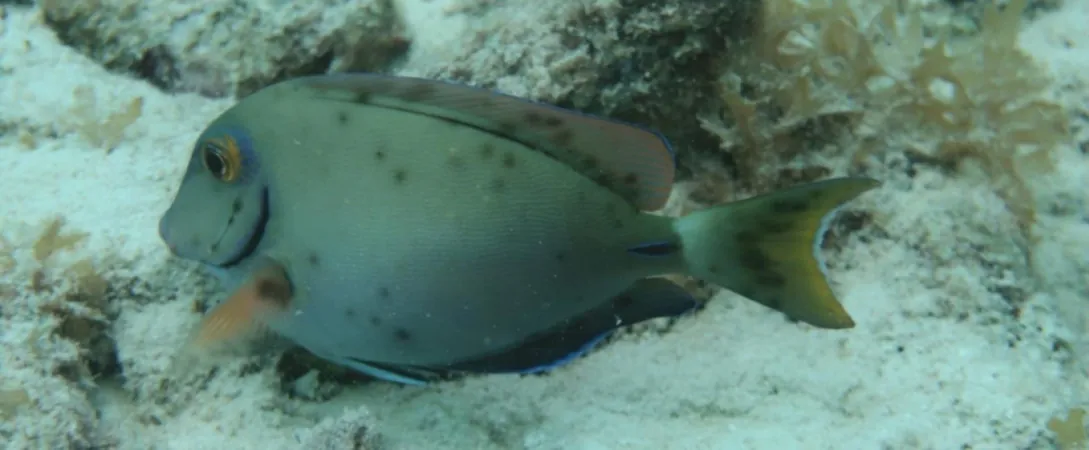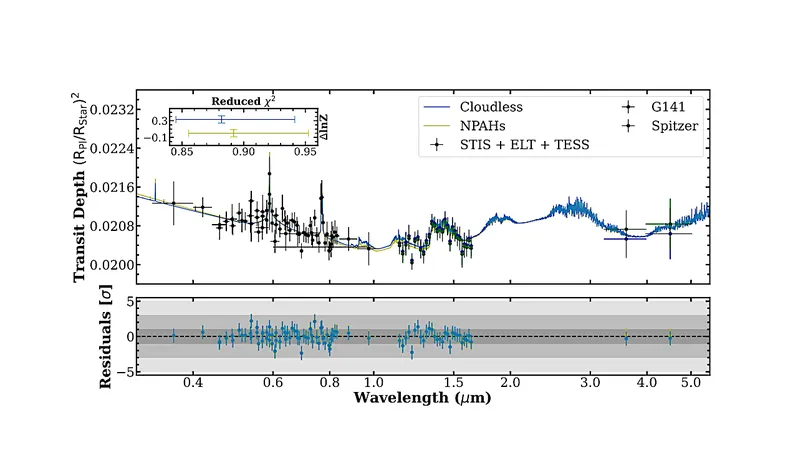
Dive into Discovery: The Surprising Roots of Black Spot Syndrome in Fish
2024-11-18
Author: Benjamin
Dive into Discovery: The Surprising Roots of Black Spot Syndrome in Fish
In a groundbreaking effort to understand wildlife diseases without harming their subjects, scientists are increasingly opting for non-invasive research methods. This is particularly crucial for species facing population declines, where traditional dissection practices might threaten their survival.
The latest study featured in Marine Biology, led by Pieter Johnson from the University of Colorado Boulder and Cheyenna de Wit of the University of Amsterdam, showcases how new techniques such as video transects can not only help document marine life but also unravel the environmental mysteries behind black spot syndrome in ocean surgeonfish.
What Exactly is Black Spot Syndrome?
Black spot syndrome manifests as unsightly dermal lesions on fish, with the most typical symptom being dark spots—though in some species, they may appear white. These afflictions arise when parasitic flatworms, called trematodes, penetrate the skin of the fish, resulting in cyst formation. As a defensive response, fish encapsulate these cysts with melanin, leading to the characteristic black marks similar to pearls in oysters.
Until recently, the trematode responsible for this condition, Scaphanocephalus, was completely unknown in Caribbean fish populations, highlighting the need for further study. In their observations, Johnson and de Wit found that a startling 70% of surgeonfish exhibited signs of this infection, leading them to hypothesize about the broader implications for both the fish and their ecosystems.
How Does This Affect Reef Ecosystems?
The study indicates that infected fish may exhibit compromised grazing behaviors, which can dramatically affect coral reef ecosystems. Surgeonfish and parrotfish play a crucial role in controlling algae populations that can suffocate corals. If these herbivores are unable to effectively graze due to infection, it could lead to unchecked algal growth, potentially leading to the decline of coral reefs—already under threat from climate change and pollution.
Worryingly, as infected fish are more vulnerable to predators like ospreys, this can consequently escalate trematode populations, creating a vicious cycle that further jeopardizes fish health and reef stability.
Environmental Drivers Uncovered
The researchers used video transect methodologies to survey fish in Curaçao and measure the prevalence of black spot syndrome, comparing infection severity across various environmental conditions. They found that geographic position significantly impacted the extent of infection—fish located towards the western part of the island exhibited higher infection rates, correlated with factors such as urban development and pollution from runoff.
One key finding indicated that increased nitrogen levels from sewage runoff might not only boost trematode populations but could also impair fish immune systems, leaving them more susceptible to infections. Similarly, the wave intensity—which is typically stronger in the eastern side of Curaçao—may deter trematode larvae from reaching fish, contributing to the lower infection rates in that region.
Innovative Non-invasive Research Methodologies
What sets Johnson and de Wit’s research apart is their rigorous approach to quantifying the severity of infections. By using video recordings to document the number of lesions rather than merely noting their presence, they have laid the groundwork for future studies to be more precise in assessing the health impacts of parasites on fish populations.
Moreover, these methods can be expanded through community science initiatives, leveraging technology and citizen engagement. Platforms like iNaturalist allow divers and ocean-goers to log their observations and photos, creating a rich database that can provide insights into infection patterns across various geographical areas.
Final Thoughts: A Call for Action
The revelations from this study highlight the intertwined nature of fish health and environmental conditions. With the ongoing threats facing coral reef ecosystems, addressing the pollution and developmental pressures that contribute to diseases like black spot syndrome is paramount. By understanding the complexities of these interactions, we can better protect marine biodiversity and ensure the health of our oceans for future generations.
It’s a race against time, and the stakes could not be higher: preserving the beautiful yet fragile marine ecosystems that so many species—fish and humans alike—depend upon.









 Brasil (PT)
Brasil (PT)
 Canada (EN)
Canada (EN)
 Chile (ES)
Chile (ES)
 España (ES)
España (ES)
 France (FR)
France (FR)
 Hong Kong (EN)
Hong Kong (EN)
 Italia (IT)
Italia (IT)
 日本 (JA)
日本 (JA)
 Magyarország (HU)
Magyarország (HU)
 Norge (NO)
Norge (NO)
 Polska (PL)
Polska (PL)
 Schweiz (DE)
Schweiz (DE)
 Singapore (EN)
Singapore (EN)
 Sverige (SV)
Sverige (SV)
 Suomi (FI)
Suomi (FI)
 Türkiye (TR)
Türkiye (TR)